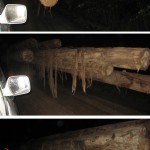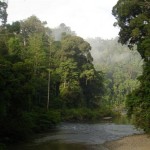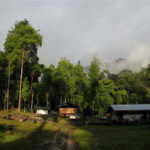Biomimicry
At last I get around to reading Biomimicry and it has helped me to understand the balance between the natural and the man-made.
Browsing Mongabay the other day I came upon this article which discussed the conflict between environmentalists and the timber industry in Tasmania. The piece was structured around the views of those who see tasmanian forests as an exploitative resource, those that think it should remain untouched and a minority who think it could be both.
This got me wondering where I would place myself on this spectrum. Firmly towards the ‘untouched’ end I thought.
A few days later I was reading about polyculture agriculture in Janine Benyus’ book – Biomimicry. On the one hand is conventional agriculture that is not sustainable because it looses soil and requires unsustainable inputs. On the other is a sustainable ideal that won’t feed us. In between lies an agriculture that mimics a natural ecosystem and provides food.
I realised that forestry is agriculture and that if we tried to mimic a natural ecosystem we might see more bio-diverse plantations with lower fossil fuel imputs and less environmentally harmfull outputs.
I revised my position on the spectrum a little closer to the centre.
The impetus to read Biomimicry came from a lecture on the subject organised by the Malaysian Institute of Architects (PAM). At that lecture I heard Neil Thomas of Atelier 1 discussing how their projects mimic nature, Andrew Grant of Grant Associates showing us his fantastic supertrees set in an artificial landscape and finally the eclectic work of Meejin Yoon & Eric Howeler of MY Studio which included what they describe as super-natural landscapes.
At the end of the talk I asked the speakers whether they thought that this is the future for our planet [artificial landscapes and imitations of nature]?
The PAM Master of Ceremonies said yes, we have to use technology to get us out of the mess we’re in.
Andrew Grant said that he thought that in urban areas, yes this was the answer but that there was still space for true nature.
Meejin Yoon said yes but cautioned that we must remember that we can never do better than nature.
I could see in Andrew’s and Meejin’s answers the middle ground between an artificial fix (biomimetic or otherwise) to environmental problems and the alternative for a natural fix implicit in my question.
Biomimicry is an optimistic and inspirational book which I hope will not be misinterpreted to mean that natural systems can be replaced by the artificial.
The message of the book seems to be (I haven’t finished reading it yet) that we can use biomimicry to greatly improve the life-friendliness of the things we do. With this as our motivation and a humble respect for nature as our check, I can see the case for mimicking nature in the above examples of forestry, agriculture, building and many more.
If you see me championing the cause for forests and wild places remaining as wild and natural as possible, it’ll be because I see general consensus moving towards the other end of the spectrum.
Related Posts
An excellent rant against geo-engineering and why we should use natural rather than man-made systems to restore the biosphere can be found here on Ecological Internet







